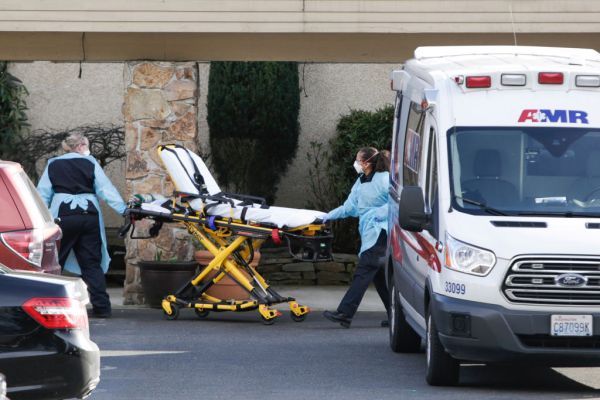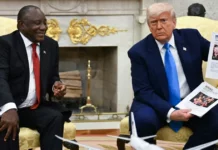NEW YORK: US President Donald Trump said he is considering tightening travel restrictions as the coronavirus or COVID-19 outbreak continues to claim more American lives, taking the US death toll to nine and spreading across major urban areas including New York on Tuesday. The second confirmed case in New York is that of a lawyer in his 50s who had an underlying respiratory illness and is now at New York-Presbyterian Hospital in “serious condition”.
New infections in New York, California and Georgia have no connections to international travel and have set off alarm bells across the country. Five states – California, Washington, Texas, Nebraska and Illinois, have nearly a 100 cases just between them. Some Seattle area schools closed, many states declared emergency, public events are getting cancelled as the number of infections in the US jumped well past 100 across more than a dozen states, with 27 cases in Washington alone.
World Health Organization Director-General Dr. Tedros said today that there are now 90,893 reported cases globally and 3,110 deaths.
Seattle schools have begun training staffers on the mechanics of remote lessons in case schools need to be shut down for an extended period. Almost everywhere in the US, people are on edge but answers to the simple questions are hard to come by: Is it okay to travel during spring break, are more school closures on the cards and whether corporate leaders should actually push for remote work rather than waiting for things to go downhill.
“We’re not going to get out of this unscathed”, Anthony Fauci, Director, National Institute of Allergy and Infectious Diseases, said today as the US health system scrambled to get its act together.
He said, “I think that this is going to be one of those things we look back on and say, ‘boy, that was bad.'” Fauci, who has been in the thick of America’s response to nearly a dozen outbreaks during the reign of at least six presidents, told Trump the rapidly shrinking timeline to begin vaccine trials is a triumph in itself.
Trump continued with his signature messaging, highlighting the overall “low risk”, the early decisions on shutting off inbound travel from China and pinning hopes on America’s drug manufacturers to deliver. “Therapeutics could happen a lot faster than the vaccine, so we’re hoping for some good answers”, Trump said at the National Institutes of Health today.
The official line from the US health experts remains unchanged: “For the average American going about your daily life, the risk of getting coronavirus is really low.” “The prevalence of fatalities have been in the elderly and those who have other forms of fragility”, Alex Azar, Health and Human Services Secretary said.
Fauci, who is hailed by Trump administration officials as one of the world’s best infectious diseases specialists, has already cautioned that the first vaccine for coronavirus is at least 8-12 months away.
Meanwhile, doctors and nurses are telling patients to double down on the basics: Wash your hands thoroughly with soap and water or a hand sanitiser with at least 60 per cent alcohol, avoid touching your face, especially face, eyes, nose and mouth. Wiping surfaces with regular disinfectant is enough to kill the virus, they say.
Although Trump has compared the coronavirus with the annual flu, doctors who are learning of the coronavirus symptomatic pattern point out crucial differences. The coronavirus is less about nose congestion and more about the lungs, they say. Doctors are reporting fever, dry cough, shortness of breath, gastrointestinal problems or diarrhoea and malaise as the dominant symptoms.
The Department of Health and Human Services chief said that public health labs could test up to 75,000 people by the end of this week. These numbers are way short of the US government’s own initial estimates.
Expedited vaccine trials are likely to begin in about two months and it would take a further three months to determine safety and efficacy which means the fastest possible time frame would still be upwards of 6-8 months before a breakthrough, according to Dr. Fauci. IANS






